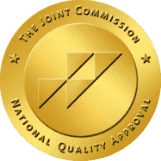Are You in a Codependent Relationship?
Codependency is a form of relational dysfunction that is more common than you think.

Article Contents
What is Codependency?
Licensed psychologist and author Dr. Renee Exelbert describes codependency as a “circular relationship in which one person needs the other person, who in turn, needs to be needed.”
1 Codependency comes down to an emotional over-reliance on a friend, family member, or romantic partner, which ultimately leads to unhealthy dynamics within relationships.
Codependency vs. Dependency
There is a distinct difference between dependency and codependency. While codependency is a maladaptive give-and-take between two people, dependency refers to people who lean on each other for support while still being interdependent and self-sufficient.
2 Codependent relationships are characterized by people who are not self-sufficient, as one person needs someone else to meet their needs, while the other only feels worthy if they are meeting the first person’s needs.
Impact of a Codependent Relationship
An important dynamic integral to codependent relationships is that of the “giver” and the “taker”—the giver assumes responsibility for meeting the taker’s needs (while neglecting their own needs), and the taker desires and encourages this behavior.
The reason codependency is a problem is that the giver pours so much time and energy into the taker that they can lose their sense of self. Codependent relationships can also coincide with abusive and one-sided relationships.
Some common signs of a codependent relationship include enmeshment (rather than independent) and imbalance (instead of equity).
3
A Dysfunctional Family Can Lead to Codependency

What causes us to seek out these unhealthy relationships? A dysfunctional family is often the culprit. For the givers, growing up with a parent who you could only connect with by putting their needs above your own could certainly form a pattern of codependent relationships. As for takers, according to author and professor of psychology Dr. Shawn Meghan Burn, “Takers are sometimes selfish and manipulative, irresponsible and entitled. But some are just troubled or addicted or lacking in life skills.”
4
Characteristics of a Codependent Person
Some of the common characteristics of a codependent person—the giver—include:
- Reliance on another person for self-esteem and validation
- Inability to assert needs in a relationship or feeling guilt after asserting needs
- Inability to set boundaries
- Compulsive loyalty to someone, even if it is destructive
- Loss of self while investing in the needs of another
Codependency can also occur alongside addiction. The term itself was coined in the 1950s to describe the toxic relationship people had with friends or family members with substance use disorder. Someone trying to quit addiction may lean on those around them to an unhealthy extent, and their family members or others may feel an extreme need to care for the person with substance use disorder.
Codependency and Addiction
Withdrawal, the unpleasant challenge that comes after someone tries to quit an addiction, can be taxing on the mind and body and can put someone with a substance use disorder in an extremely vulnerable position. Family members and others may find that codependent dynamics feel natural in the withdrawal period that their loved one goes through while trying to quit the addiction.
These codependent dynamics could include enabling the person’s drug abuse, soothing withdrawal symptoms by providing the substance, putting the person with substance use disorder’s emotional needs above their own, and becoming overly enmeshed in the person’s life. However, these dysfunctional family patterns, like being too involved in someone else’s journey towards quitting addiction and drug abuse, can veer into extreme codependency very quickly.
Addiction vs. Obsession
According to Darlene Lancer, JD, MLFT, codependents often spend large amounts of time and energy investing into the person they are in a codependent dynamic with, often neglecting their own needs. This viewpoint can even lead to obsessive behavior.
5
Codependents can obsess about those they love, including the problems that their loved one’s struggle with. In this way addiction vs. obsession becomes a compounded problem on top of the codependent relationship.
6
Are You in a Codependent Relationship?
Take a moment to answer the following questions:
- Are you involved with someone who relies on you to care for or “rescue” them from their responsibilities?
- Do you feel sorry for the other person, even after they’ve hurt you?
- Is your relationship unbalanced, featuring an enabling of bad habits like drug addiction, alcohol addiction, or anger issues?
- Do you find yourself trying to “fix” someone in your life, to the extent that they now rely on you to get their needs met?
- Do you consider yourself to be part of a “dysfunctional” family?
- Do you find yourself constantly putting someone else’s needs above your own?
- Do you feel that people must like you to feel good about yourself?
- Are you often “walking on eggshells” to avoid upsetting another person?
- Do you constantly apologize to someone, even when you haven’t done anything wrong?
- Do you feel that your sense of self is diminished due to the relationship?
If you answered “yes” to some or most of these questions, you may have codependent tendencies or be in a codependent relationship.
On the flip side, if you engage in the opposite of the questions listed above—in other words, if you expect someone else to do the above behaviors for you—you may be the “taker” in a codependent relationship.
Can Codependency be Treated?
Ultimately, codependency is harmful to the giver and the taker—it drains the giver and diminishes their self-esteem, and the taker becomes unequipped to deal with responsibilities in their life. Treatment is necessary to end the harmful patterns of codependency.
Like quitting an addiction, getting out of a codependent relationship involves first identifying the problem. The next step is talking to the other person involved in the codependent relationship, then seeking counseling or
therapy, individually or together.
Family therapy may be useful in treating dysfunctional family patterns including codependency, while couples counseling can be useful for treating codependency in a romantic relationship. A therapist can determine if the problems in your life are indeed codependency, and help you find ways to move away from dysfunctional family or relationship patterns. Ultimately, treatment can liberate codependents from the compulsive need to fix or save others and teach them how to balance their needs with others’.
7
- https://www.verywellmind.com/what-is-codependency-5072124
- https://www.psychologytoday.com/us/blog/evolution-the-self/201412/codependent-or-simply-dependent-what-s-the-big-difference
- https://www.nbcnews.com/better/health/what-codependency-signs-codependent-relationship-ncna940666
- https://www.nbcnews.com/better/health/what-codependency-signs-codependent-relationship-ncna940666
- https://whatiscodependency.com/obsessions-codependency-love-addiction/
- https://whatiscodependency.com/obsessions-codependency-love-addiction/
- https://www.goodtherapy.org/learn-about-therapy/issues/codependency
Related Content
More About Addiction

 What causes us to seek out these unhealthy relationships? A dysfunctional family is often the culprit. For the givers, growing up with a parent who you could only connect with by putting their needs above your own could certainly form a pattern of codependent relationships. As for takers, according to author and professor of psychology Dr. Shawn Meghan Burn, “Takers are sometimes selfish and manipulative, irresponsible and entitled. But some are just troubled or addicted or lacking in life skills.”4
What causes us to seek out these unhealthy relationships? A dysfunctional family is often the culprit. For the givers, growing up with a parent who you could only connect with by putting their needs above your own could certainly form a pattern of codependent relationships. As for takers, according to author and professor of psychology Dr. Shawn Meghan Burn, “Takers are sometimes selfish and manipulative, irresponsible and entitled. But some are just troubled or addicted or lacking in life skills.”4




